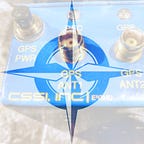Updated 1/9/2018
CSSI’s Reduced Vertical Separation Minimum (RVSM) Monitoring Team was recently recognized by the NASA Johnson Space Flight Center’s, Aircraft Operations Division, Flight Operations, Directorate, for their continued support of their T-38N RVSM Monitoring Program.
NASA uses the Northrup T-38N for astronaut training in a real world environment.
“It’s actually our most important training that we do as astronauts,” said Terry Virts, who flew as the pilot of STS-130 aboard shuttle Endeavour. “It’s the one place where we’re not in a simulator. It’s real flying and if you make a mistake, you can get hurt or break something or run out of gas. There are a lot of things that happen real-world in a T-38 that don’t happen in the simulator.”
Powered by two afterburning General Electric J85 engines, a T-38 can fly supersonic up to Mach 1.6 and soar above 40,000 feet, about 10,000 feet higher than airliners typically cruise. The plane can wrench its pilots through more than seven Gs, or seven times the force of gravity. That’s enough to make simply lifting hands a feat of strength and breathing a labored chore. It’ll make one’s neck feel like it is balancing a cinder block. It’s also more than enough to make the average person black out. — T-38s Soar as Spaceflight Trainers
T-38N RVSM Monitoring
NASA RVSM Certification Process Presentation on the FAA ASE Workshop page
Reduced Vertical Separation Minima (RVSM) is the aircraft standard for separation reduction between aircraft from 2,000 feet vertical to 1,000 feet vertical inside the airspace altitude stratum of 29,000 feet to 41,000 feet. In order to maintain safety, all aircraft operating in the reduced separation environment of RVSM altitudes must be approved and the aircraft height-keeping performance must be tested and confirmed.
Since aircraft fly an altitude based on air pressure readings and the air pressure surface can change based on factors like weather, the true altitude flown cannot be observed by both the pilots and the air traffic control. Global Positioning Systems (GPS) inside the aircraft, however, can be used to determine the true altitude the aircraft is flying.
RVSM Monitoring uses GPS time and positional data recorded on an aircraft flying in RVSM altitudes (FL 290–FL 410) to determine the height-keeping performance. If the height-keeping performance is deemed with tolerances for safety, the aircraft is confirmed approved for operations in the reduced separation environment.
T-38N RVSM Monitoring
CSSI’s RVSM Team has been supporting the NASA T-38N RVSM Monitoring since 2005, having supported over 175 flights via our Federal Aviation Administration (FAA) William J. Hughes Technical Center, Separation Standards Support contract.
NASAs T-38N aircraft have supported NASA’s Astronaut Training Program for more than 30 years and provide the pilots with the challenges necessary to practice for the rigors of spaceflight. The T-38N can fly supersonic to Mach 1.6 and can achieve an altitude above 55,000 feet.
The T-38N is a small two-person aircraft with a single altimetry system requiring a special installation for the monitoring equipment other than our typical commercial and general aviation aircraft data collection effort.
NASA recently completed some RVSM flight tests of their T-38N using both the FAA’s Enhanced GPS Monitoring Unit (EGMU) and CSSI’s commercial Enhanced 2nd Generation GPS Monitoring Unit (E2GMU). As a result of the dual data collection method, NASA has chosen to utilize the E2GMU to continue to support the remaining RVSM test flights planned their T-38N fleet.
RVSM Monitoring Flight Testing Data Examples
As recognition and appreciation of the RVSM Team’s continued support, the NASA T-38N Program Manager presented Carol Clarke and Bobby Miller with patches representing the T-38N program which were flown in the T-38N aircraft during an RVSM flight test.
History of CSSI’s RVSM Monitoring Program
CSSI has been supporting the RVSM program since July 1999 when we were first awarded a contract to provide RVSM monitoring services to aircraft operators in the Asia-Pacific Region. Since that time, CSSI’s RVSM monitoring support has extended worldwide and we are the leading provider of RVSM monitoring services; with 24 RVSM monitoring partners, and having supported almost 10,000 RVSM monitoring flights.
For the FAA, CSSI has also developed a portable RVSM Monitoring flight testing toolkit. A commercial version of the toolkit (E2GMU) has been authorized for sale to civil aviation authorities, maintenance and repair organizations, and aviation industry businesses.
If you would like more information on our RVSM Monitoring Toolkit Sales or Aircraft Monitoring Services, please contact us at www.cssiinc.com/RVSM
Originally published at www.cssiinc.com
